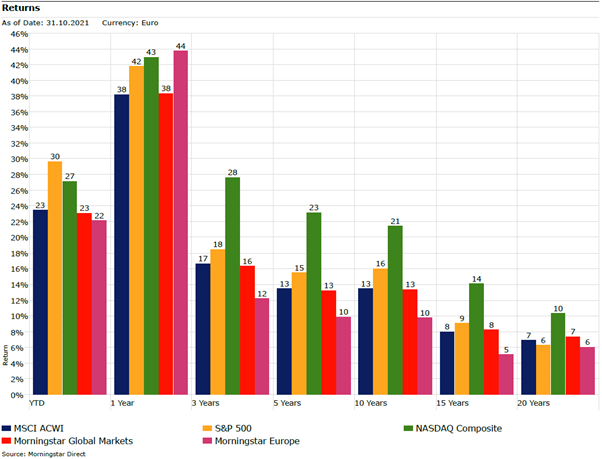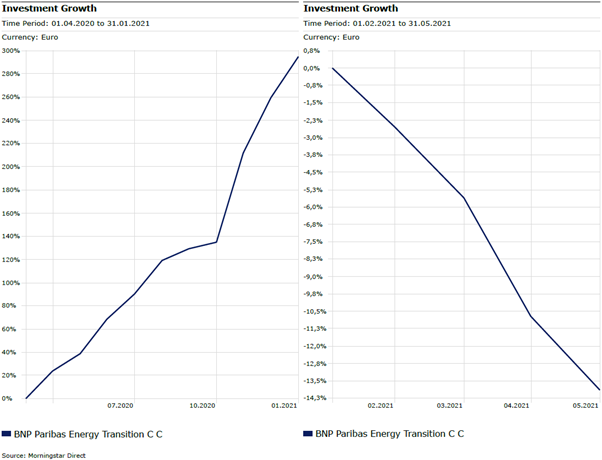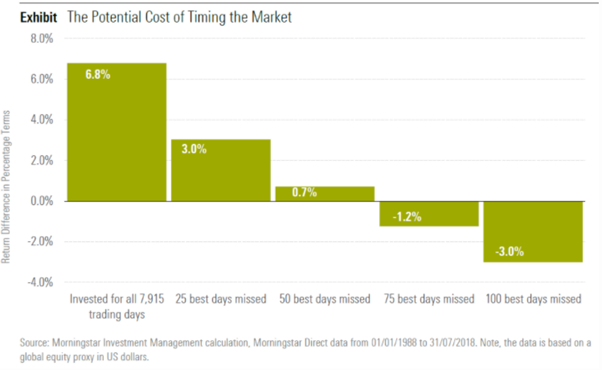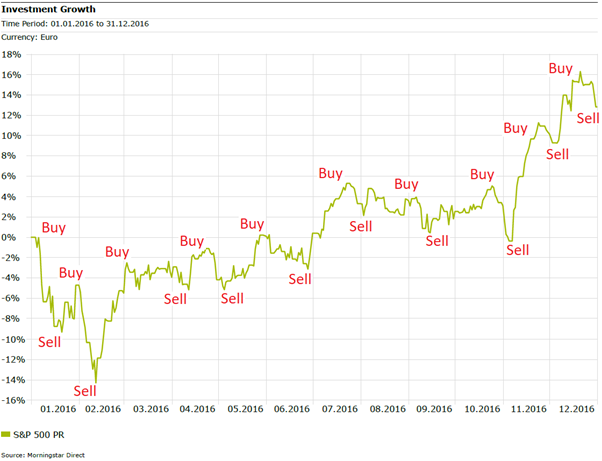
Often fund investors sell in panic when markets dive into negative territory. They may also become impatient and switch funds if short-term returns are lower than expected. Not good.
Such behaviours can lead to poor investment returns because of excessive fund switching and the tendency to buy high and sell low. Here are three things to consider to help turn those habits around:
Have Realistic Return Expectations
Many retail investors dipped their toes in the markets for the first time during the coronavirus pandemic. But inexperienced investors might have gotten unrealistic return expectations by reading success stories in the media or online forums about high double- or even triple-digit fund returns earned over a few months. However, we should be aware that expected long-term returns will likely be much lower than we have experienced in the last two years. Experts forecast that long-term stock returns will likely be a single-digit figure.
The table below shows the historical annualised returns for five indices, including the Morningstar Global Markets Index and Morningstar Europe Index. The observable trend is that returns decrease when the time horizon increases. Unrealistic expectations of future returns can lead to disappointment, impatience, and excessive fund switching if reality falls short of expectations.

Stop Chasing Returns
Amid the stock market crash in March last year, not many predicted that 2020 would offer record high returns. For instance, many alternative energy funds experienced steep inclines in 2020. Funds that can brag about fantastic historical returns naturally increase in popularity, and more investors tend to flock to these funds.
The danger of such behaviour is that many fund investors fall behind in the pursuit of high returns. Morningstar’s Mind the Gap report finds that investor returns in most markets are lower than the official total returns stated by the funds. This shortfall stems from inopportunely timed subscriptions and withdrawals of fund shares, according to the report. Furthermore, areas with higher volatility had higher shortfalls.
The graph below (on the left) displays the performance of BNP Paribas Energy Transition Fund from April 2020 to January 2021. Just look at that mountain goat climbing a staggering 295% over that short period! Before you listen to Eminem and lose yourself in the moment thinking this is a once-in-a-lifetime opportunity, remember that no investment grows like that forever. The steeper it gets, the greater the potential for a correction. The graph below (on the right) displays the performance of the same fund from February 2021 to May 2021. I guess mountain goats also need some rest, although the correction was “only” 13,9% (the YTD-return is 12,2% per October 31).
If you chase historical returns, you might fall victim to short-term trading and sell if reality does not meet your expectations.

Time in the Market Beats Timing the Market
The idea of selling when the market falls and then buying back when prices are lower seems tempting. But market timing is much easier said than done. According to a Morningstar study from 2018, missing out on only a few critical days can severely impact your investment returns, as the bar chart below displays.

The markets will always provide you with many buying- and selling opportunities, as illustrated by the graph below. But trying to time the market can potentially lead you to enter high and exit low. According to Morningstar’s Mind the Gap report the best results were found in areas where investors are required to commit to continued investment.

If you zoom in too much, the markets can resemble a Rocky vs. Drago fight – dangerous and volatile. But remember that equity funds do not develop in a straight upward sloping line. Fund investors should be prepared for many small, and some significant, drawdowns during their investing journey.
In case you have zoomed in to scrutinize every bump along the way, it might serve you well to zoom out to see how it is all connected. The graph below displays the 20-year return for S&P 500, per October 31, 2021. Observe that the "high" waves in 2016 (red box) are more like small ripples when we zoom out.
Until you find a person that can sprint a marathon, fund investing should probably be considered a marathon, not a sprint. Having realistic return expectations can help you keep your eyes on the prize. Also, try not to chase historical returns. Remember that the markets are always forward-looking (staring in the rear-view mirror while driving will likely not work in the long run). And lastly, try to exclude short-term market turbulence and “noise” as much as possible. The probability of investment success is much higher over the long term. A long savings horizon increases the likelihood of eliminating any losses you may experience along your investing journey. In addition, a long savings horizon is supposed to unleash the magic of compounding interest.
However, having a long-term perspective does not mean that you should avoid making changes to your portfolio. But any changes should be based on rational and informed decisions to increase the likelihood of reaching your financial goals.





























